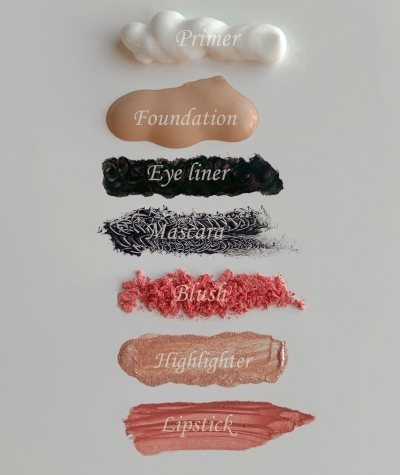Did you know cosmetics have been around for over 12,000 years?
In our bathroom cabinets, our toiletry bags, work drawers, handbags, baby bags and glove compartments are pots, wands, sticks, tubes and bottles of incredible science that play an essential part in our daily lives. From our morning routines to our bedtime rituals, our favourite cosmetic and personal care products help us to look our best and feel our best.
However, cosmetics have been with us for over 12,000 years and perhaps even longer, and companies work to bring new innovations to people as our habits and needs change. Indeed, cosmetic and personal care products play an essential role in supporting people's health, self-esteem and wellbeing.
With so much history, there have been thousands of inventions and stories around cosmetic products, so let's see how some of this came about:
A timeline of cosmetic product development
BC
10,000 BC - ancient Egyptian people use cosmetic products heavily, including scented oils and creams for everything from skincare to religious ceremony
3000 BC - our earliest traces of nail lacquer come from this time, developed by the Chinese and made from gum Arabic, beeswax, egg white and coloured powder
2000 BC - the first recorded evidence of lipstick use dates back to the Sumerian city of Ur.
1500 BC - in China and Japan people of high standing (both men and women) would use rice powder paint to whiten their faces, eyebrows were also plucked and teeth were painted black or gold
1st century
37 - 68 AD - Emperor Nero and his wife Poppaea used cosmetics liberally, including white lead and chalk for the skin, Egyptian kohl for eyelids and lashes, algae extract for the cheeks, barley-flour and butter as a cure for pimples and pumice-stone for whitening the teeth
11th Century
Alcohol-based perfumes are first brought to Europe from the Middle East by the Crusaders
14th Century
European women sleep with slices of raw beef on their face to try and get rid of wrinkles
15th Century
Women's fashion in the UK was to shave the forehead, pluck out eyebrows and eyelashes and whiten their faces and bosoms with ceruse - a mixture of powdered leads and vinegar
16th Century
During the Elizabethan era, women wear egg white on their faces for a shiny look
18th Century
1755 - 1793 - Marie Antoinette washed her face in red wine to protect it against wrinkles
19th Century
Women used belladonna (or deadly nightshade) to make their eyes more luminous, despite the knowledge that it was poisonous, the product would dilate the pupils
1889 - first deodorant developed in cream form by a mum and inventor, Edna Murphey, in Philadelphia. She called the product 'Mum'!
20th Century and beyond
Early 1900s - arsenic preparations were thought to be the best cure for freckles
1907 - the first synthetic hair dye was created by French chemist Eugene Schueller
1920's - Coco Chanel is seen with a tan on the Duke of Westminster's yacht, having a sun tan becomes more popular as a result
1922 - Tutankhamun 's tomb is opened by British archeologist Howard Carter and his team of workers, numerous pots of highly perfumed pomade are discovered, smelling nearly as good then as when they were first made
World War II
Special licences are issued to allow manufacturers to produce make-up to boost morale amongst women
The war leads to the development of synthetic detergents that formed the basis of modern shampoos, toothpastes, sunscreen products for servicemen and skin protection products for female factory workers
On 17 May 1945, the Perfumery & Toilet Preparations Manufacturers' Section of the London Chamber of Commerce voted for a single organisation for the industry, thus the Toilet Preparations and Perfumery Manufacturers' Federation of Great Britain (which eventually became CTPA) was formed. On 1 October the first general meeting of the new federation is held.
1950's - 98% of American women wore lipstick; only 96% brushed their teeth
1952 - inspired by the ballpoint pen, the first roll-on deodorant was introduced
1952 - the UK cosmetics industry association changed its name to the Toilet Preparations Federation (TPF)
1952 - One of the first recycling initiatives for cosmetics is piloted in the UK, a lipstick container recovery scheme prompted by a shortage of brass
1962 - Comité de Liaison de la Parfumerie (COLIPA), the precursor to Cosmetics Europe - the present day trade association for the European personal care industry, is founded
1965 - the first aerosol deodorant is introduced worldwide
1978 - TPF changes its name for the final time to the Cosmetic, Toiletry and Perfumery Association (CTPA), to be clear about the industry it represents.
1993 - the launch of the industry charity, Look Good Feel Better, which was set up to help support people dealing with the emotional and visual side-effects of cancer treatment.
1997 - in the UK, testing of cosmetic products on animals ceased after a voluntary initiative by industry which led to all licences for testing cosmetic products to be withdrawn
2004 - the EU follows the UK by putting in place the first stage of its bans on the testing of cosmetic products and ingredients on animals
2008 - CTPA breaks new ground for a trade organisation by launching a dedicated consumer website, www.thefactsabout.co.uk providing easy to understand information about the science behind cosmetic products and their safety, correcting myths and misinformation.
2013 - the EU puts into place the final stage of the ban on testing cosmetic products and ingredients on animals, anywhere in the world, in order to sell cosmetics in the UK and EU.
2021 - the UK establishes its own cosmetics laws, independent of the EU. The UK laws uphold the gold standard of safety and the animal testing bans for cosmetics sold in Great Britain.

